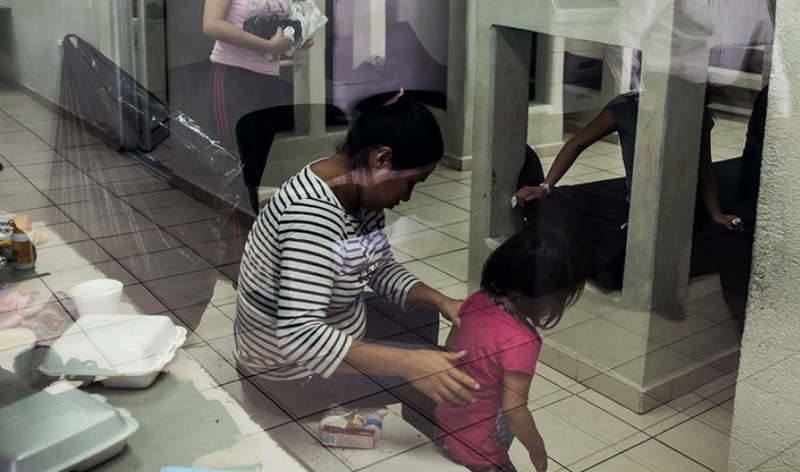 Global Displacement
Global Displacement Global displacement rising despite lockdowns that kept billions grounded
There was a dramatic increase in internal displacement due to disasters, conflict and violence in 2020, but global mobility overall, ground to a halt due to COVID-19 travel restrictions.
That is the main finding of the World Migration Report 2022, launched on Wednesday by the International Organization for Migration (IOM).
For IOM's Director General, António Vitorino, the world is "witnessing a paradox not seen before in human history.”
“While billions of people have been effectively grounded by COVID-19, tens of millions of others have been displaced within their own countries,” he said.
Key findings
Globally, the number of air passengers dropped 60 per cent last year to 1.8 billion, down from 4.5 billion in 2019.
At the same time, internal displacement rose to 40.5 million, up from 31.5 million in the year before.
According to the report, the number of migrants crossing international borders has grown from 84 million globally in 1970 to 281 million in 2020.
When global population growth is factored in however, the proportion of international migrants has only inched up from 2.3 per cent to 3.6 per cent of the world’s population, in those five decades.
That number means that almost everyone in the world, 96.4 per cent, resides in the country in which they were born.
IOM also estimates that the number of international migrants for 2020 was lower, by around two million, than it otherwise would have been without the pandemic.
Regions
In terms of regions, Europe and Asia hosted around 87 and 86 million international migrants, respectively, comprising 61 per cent of the global international migrant flow.
These regions were followed by North America, with almost 59 million international migrants, equivalent to 21 per cent of the total, Africa at 9 per cent, Latin America and the Caribbean at five per cent, and Oceania at three percent.
When compared with the size of the population in each region, shares of international migrants were highest in Oceania, North America and Europe, where they represented, respectively, 22 per cent, 16 per cent and 12 per cent.
In comparison, the share is relatively small in Asia and Africa - 1.8 per cent and 1.9 per cent, respectively - and Latin America and the Caribbean, 2.3 per cent.
In the last two decades, Asia experienced the most remarkable growth, at 74 per cent, or around 37 million people in absolute terms. Europe experienced the second-largest growth, followed by North America and Africa.
Although only a small proportion of the world's population qualify as international migrants, there exists wide variation at the country level.
In some countries, such as the United Arab Emirates, for example, over 88 per cent of the population fit the designation.
Remittances
The report notes an overall increase in remittances in recent decades, from $126 billion in 2000, to $702 billion in 2020.
There were predictions of a large decline in these transfers made by migrants directly to families or communities in their countries of origin because of the pandemic, but 2020 only saw a slight drop of 2.4 per cent compared to the year before.
India, China, Mexico, the Philippines and Egypt were the top five remittance recipient countries, although India and China were well above the rest, with total totals exceeding $83 billion and $59 billion, respectively.
High-income countries are almost always the main source of remittances. For decades, the United States has consistently been top of the table, followed by the United Arab Emirates, Saudi Arabia, Switzerland, and Germany.
Report
Accompanying the report, IOM has also launched an online interactive platform that allows users to explore and interact with key data and a toolkit to support teachers, so they can provide balanced, accurate and interesting learning materials.
The 2022 edition of the report also has a new and simple fact-checkers' toolkit to help bust key myths on migration.
In addition to data analysis, the report covers specific topics such as climate change, peace and development, human trafficking, COVID-19, disinformation, and artificial intelligence.
Support Our Journalism
We cannot do without you.. your contribution supports unbiased journalism
IBNS is not driven by any ism- not wokeism, not racism, not skewed secularism, not hyper right-wing or left liberal ideals, nor by any hardline religious beliefs or hyper nationalism. We want to serve you good old objective news, as they are. We do not judge or preach. We let people decide for themselves. We only try to present factual and well-sourced news.







